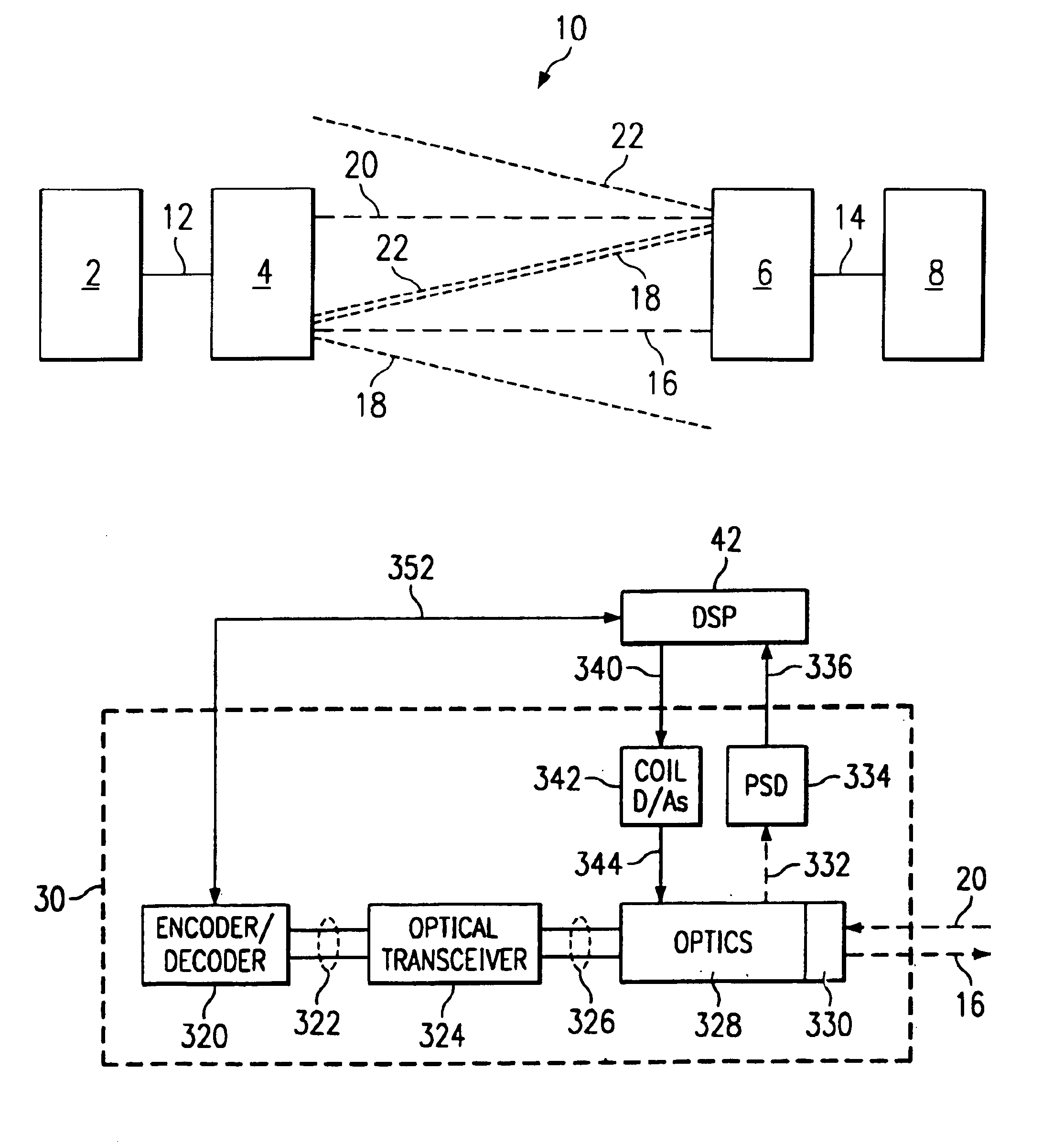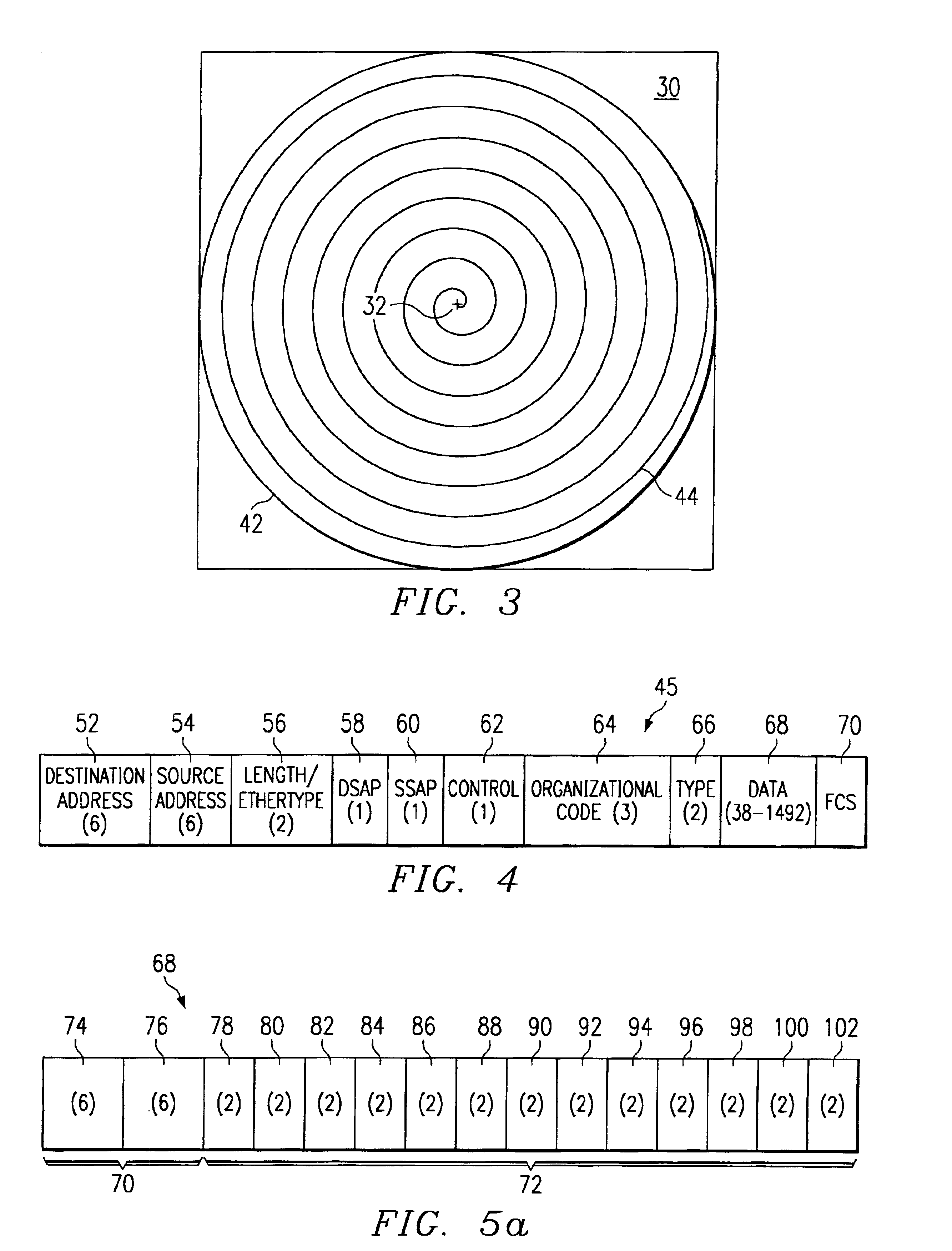Method and apparatus for aligning optical wireless links
a technology of optical wireless link and alignment method, applied in the field of optical wireless communication, can solve the problems of limited distance that such high-frequency communications can travel, physical installation and maintenance costs, and each of these conventional communications facilities involves certain limitations in their deployment, so as to achieve automatic optimization of signal reliability and signal to noise ratio, and the effect of extending the establishment of communication
- Summary
- Abstract
- Description
- Claims
- Application Information
AI Technical Summary
Benefits of technology
Problems solved by technology
Method used
Image
Examples
Embodiment Construction
[0033]The making and use of the various embodiments are discussed below in detail. However, it should be appreciated that the present invention provides many applicable inventive concepts, which can be embodied in a wide variety of specific contexts. The specific embodiments discussed are merely illustrative of specific ways to make and use the invention, and do not limit the scope of the invention.
[0034]FIG. 1 illustrates a preferred embodiment optical wireless system 10, including a first data source / sink 2 connected to a first Optical Wireless Link (“OWL”) 4. The OWL 4 can both transmit to and receive data from a second OWL 6 over a wireless optical path. OWL 6 is in turn connected to a second data sink / source 8. Preferably each OWL device is an optical path-to-sight modem. As used herein, the term path-to-sight is intended to mean an unobstructed optical path generally through the ether, as contrasted with through an optic fiber, which path can include reflection. An advantageou...
PUM
 Login to View More
Login to View More Abstract
Description
Claims
Application Information
 Login to View More
Login to View More - R&D
- Intellectual Property
- Life Sciences
- Materials
- Tech Scout
- Unparalleled Data Quality
- Higher Quality Content
- 60% Fewer Hallucinations
Browse by: Latest US Patents, China's latest patents, Technical Efficacy Thesaurus, Application Domain, Technology Topic, Popular Technical Reports.
© 2025 PatSnap. All rights reserved.Legal|Privacy policy|Modern Slavery Act Transparency Statement|Sitemap|About US| Contact US: help@patsnap.com



